Amazing Georgian Traditional Dance
Hello friends,
today, I want to share an amazing experience with all of you that I have gained during the first day of my university when I saw some extra-ordinary Georgian traditional dance. It was in the year 2010 when I first arrived here in Tbilisi to start my university education. After arriving here in Tbilisi, we had had two or three days for relaxing which were followed by a freshers' party at the university. This was when I first saw this amazing dance form. Becoming more interested in this dance, I wanted to know more about it. Nevertheless, I will share with you all the knowledge that I have gained about this traditional dance of Georgia now.
This traditional Georgian dance is called 'Kartuli tsekva' in Georgian language. The translation of this is 'Georgian Dance' as 'Kartuli' means 'Georgian' and 'shekva' 'dance'. It is said that the dance is used traditionally to express celebrations and Georgia's diverse culture. There are different forms of Georgian dance that vary from region to region and each of them has its own costumes. The dances in the mountainous regions such as Khevsuruli and Mtiuluri are different from the lowlands' dance forms such as Achaluri and Davluri. These traditional dance forms express the courage and bravery of the Goergian men, but also the gracefulness and beauty of Georgian women. The most amazing thing that I admire these dancers for is the way in which the female dancers glide trough air; the long gowns they wear make them to look like white swans. The male dancers also perform some admirable stunts when they dance: They are even capable of walking on their toes. A combination of both dancers make this dance a feast for spectators' eyes.
This wonderful dance form has gained recognition in some parts of the world because of the effort made by two people called Iliko Sukhishivili and Nino Ramishvili who created the Georgian National Ballet. There are different dance forms, as I said before, however, I don't know much about them. I will share with you some general informations about the dance forms.
- The Khevsuruli is an important form of mountain dance in Georgia. It symbolises the love, courage, respect for woman, toughness, competition and skill. The theme of the dance is that a couple who is in love is disturbed by another man. Immediately, a conflict starts between the two men and also their supporters are involved. The fighting in the dance is done with sowrds and shields. The fierce battle stops when the women drop a small part of their clothes from their hands. Then, the women clear the scene and after that the fight continues again. At the end, the dance stops when the women drop a part of their clothes again. There is no conclusion of the dance and nobody knows, if the dispute continues or it has come to the end. The dance needs good training in order to be performed without hurting the fellow dancers.
- The other dance form is Davluri which is an elegant dance performed in pairs. This is simpler than the dance illustrated above. It's a kind of dance symbolising an aristocratic city.
- The Simd is another form of traditional dance in Georgia originating from the Ossetian region. The dance is performed by couples and the dancers wear black and white costumes with long sleeves.
- Khorumi is a form of war dance that originated during the period when there were frequent invasions in Georgia through the Mongolians, Ottomans, etc. During the show, up to thirty or forty dancers may perform together.
- The Suliko is the other form of Georgian dance which is also called Kokebi, the name of the jugs the women have in their hands during the dance. The jugs are used by them to scoop water from the stream. It is a particularly slow dance which reflects the gracefulness of Georgian women.
- The Khanjluri is another form of dance in Georgia which is also called the "shepherd's dance". The dancers wear red costumes and have white wigs. The dancers use daggers to fight with each other during the dance which symbolises the courage and the people's skill with daggers. The dancers also jump and perform some athletic stunts.
- The Kartuli is an elegant and romantic dance. It is the most popular dance in Georgia. In this dance the man must not touch the woman, even his costume should not touch her. The man keeps his arms opened and extended to call the woman whereas the woman keeps her eye downward gliding like a swan in a long white gown. There are five different parts in the dance. Firstly, the man invites the woman to dance, next the woman joins the man and they dance together; thirdly, the man dances alone, fourth the woman dances alone. Finally, to conclude, everyone in the group dances together. Since the man and the woman should not touch each other during the dance, it is needed to practice very hard. It is one of the most difficult dance forms among the Georgian traditional dances.
- Acharuli is the dance form from the Adjara region which is near the Black Sea and where some important cities like Batumi and Poti are located. There are no strict rules in Acharuli dance like in the Kartuli dance.
- Svanuri is the traditional dance form of the Svaneti region. This is also a form of the mountain dance.
- Mtiuluri is another dance which actually means 'Dance Festival' and resembles Khevsuruli. There are some amazing stunts performed by the dancers in their red costumes. At first two men dance side by side and perform a variety of stunts competing with each other, followed by the women who dance; finally it ends with everyone dancing together.
- The Samaia is a dance that is performed by three Georgian female dancers representing Queen Tamar who was the first Georgian woman to become a queen. The women dance gracefully symbolising the beauty, glory and power of the kingdom in the past. The three women actually represent three faces of Queen Tamar which are as follows:
- Young Princess,
- Wise Mother,
- Powerful Queen.
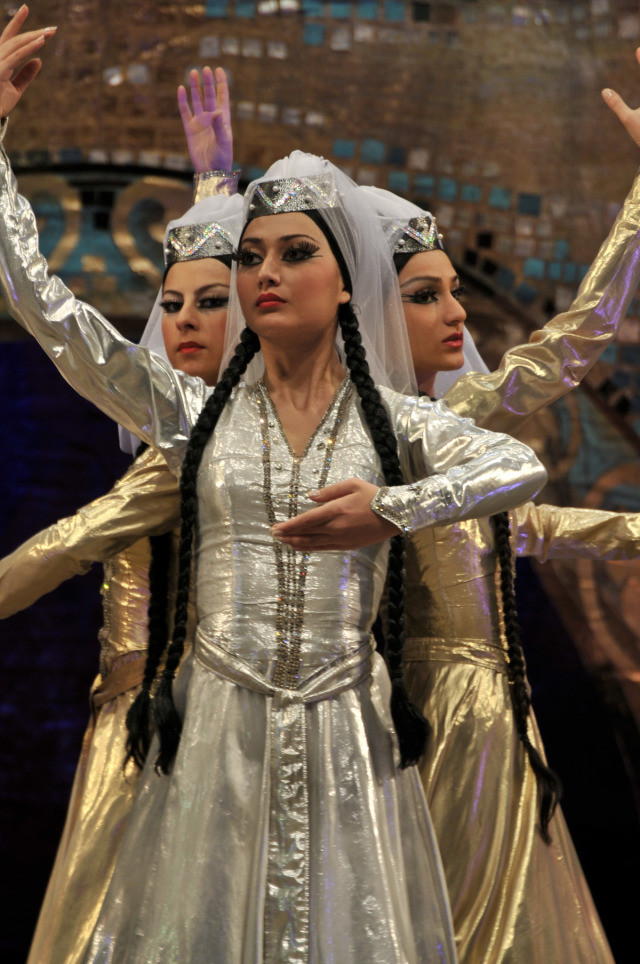

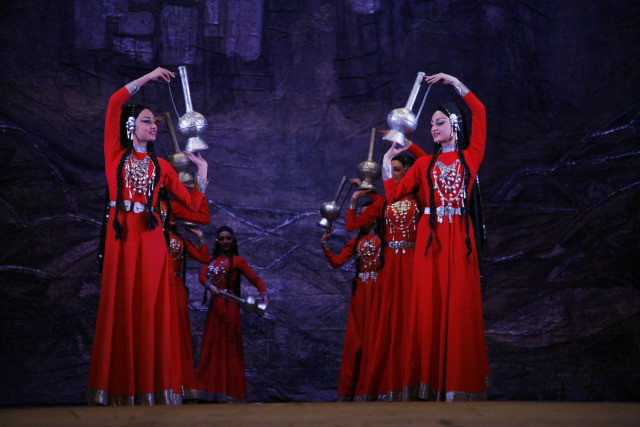
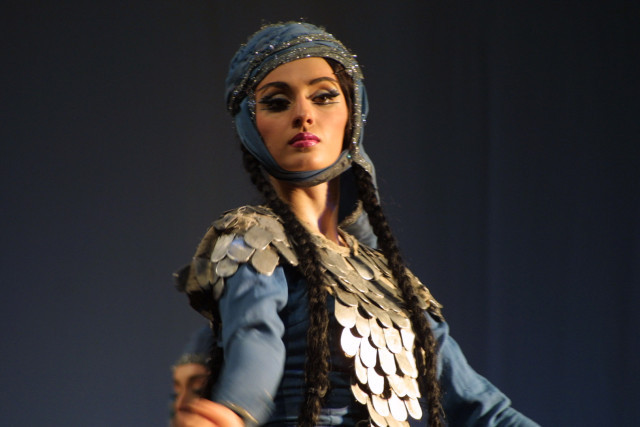
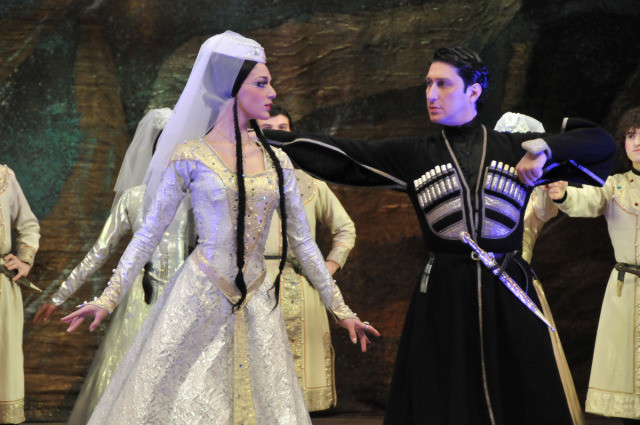
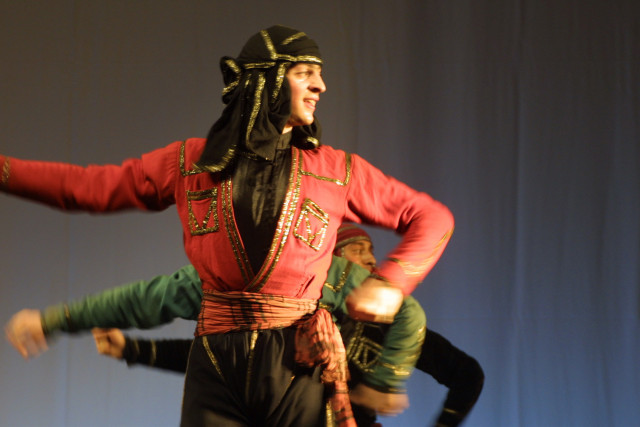
To conclude, I would say that the traditional dance in Georgia has its own unique style representing the country's diverse culture, tradition and skills. It's one of a kind and a must-see if you visit Georgia. Until I write my next article keep smiling and cheers! :) And don't forget to mention any suggestions, if you have some, in the comment box! :)
Photo gallery
Content available in other languages
- Polski: Niesamowity tradycyjny taniec gruziński
- Español: El extraordinario baile tradicional de Georgia
- Italiano: I meravigliosi balli tradizionali della Georgia
- Français: L'exceptionnelle danse traditionnelle de Géorgie
- Português: Espectacular Dança Tradicional Georgiana
- Türkçe: Hayranlık Uyandıran Gürcü Geleneksel Dansı
- Deutsch: Atemberaubender georgischer traditioneller Tanz
Share your Erasmus Experience in Tbilisi!
If you know Tbilisi as native, traveler or as exchange student... share your opinion on Tbilisi! Rate different characteristics and share your experience.
Add experience →




















Comments (1 comments)
Amazing dancers the Georgians are :)